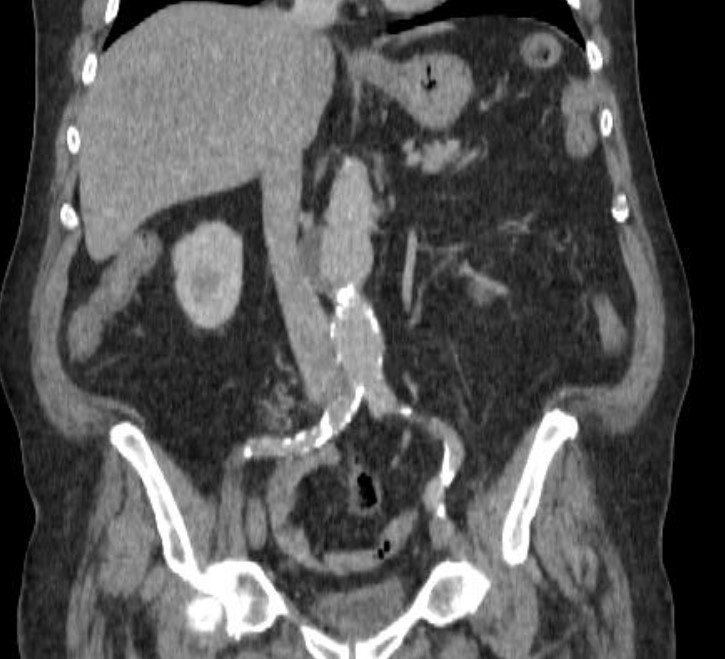Keywords
Fibrinogen deficiency, thrombosis, thrombophilia, congenital hypodysfibrinogenemia, ROTEM
Abstract
Fibrinogen deficiencies are very rare. Qualitative fibrinogen deficiencies (dysfibrinogenaemia and hypodysfibrinogenemia) are functional disorders that can present with both haemorrhagic symptoms and with thrombotic phenomena as unique and paradoxical manifestation. We present the case of a 77-year-old man being investigated for a partially thrombosed abdominal aortic aneurysm as well as an ischaemic stroke 20 years previously. Basic coagulation tests were normal but extended tests revealed a lengthened thrombin time (TT) combined with a significant drop in fibrinogen concentration measured with the Clauss assay and by nephelometry. After secondary fibrinogen deficiencies were ruled out, a heterozygous variant in the FGG gene was detected by next-generation sequencing, and congenital hypodysfibrinogenemia was diagnosed. Acenocumarol was initiated and no new thrombotic or haemorrhagic events had occurred after a year of follow-up.
In almost 25% of cases, thrombotic events may be the only clinical manifestation of functional fibrinogen deficiencies. They are a rare cause of thrombophilia, and are probably underdiagnosed due to normal standard coagulation test results as well as a possible absence of haemorrhagic events. Consequently, a TT test (an initial ‘rule out’ test) should be requested in order to promptly identify these patients. Moreover, discrepancies in derived and Clauss fibrinogen test results should suggest a functional disorder. Finally, new coagulation techniques based on the functional characterization of clot formation, such as ROTEM or thrombin generation assay, could help characterize these entities and suggest new therapeutic approaches.
References

Views: 542
HTML downloads: 86
PDF downloads: 316
Published:
2022-06-28
Issue:
2022: Vol 9 No 6
(view)










